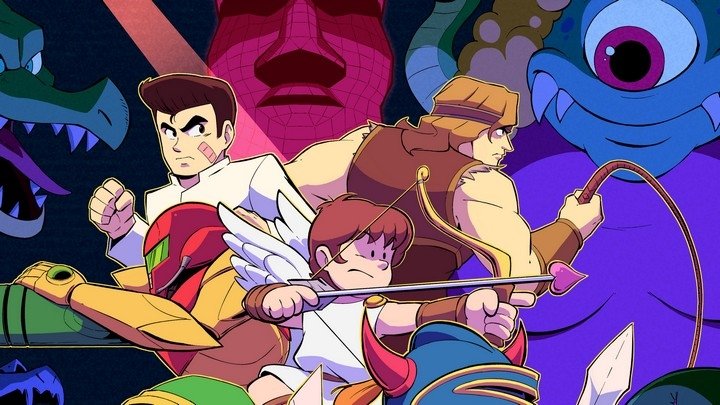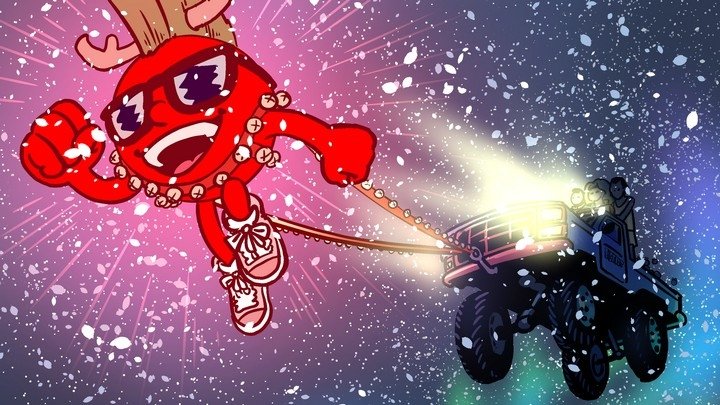How Can I Play It?: The Gradius series
It's easier than you might think to shoot the core on modern game consoles!
Our "How Can I Play It?" series lays out the best options for legitimately and legally playing the classic games we cover here at Retronauts, ideally on current platforms.
This week, the Hardcore Gaming 101 crew joined us for a fairly comprehensive survey of the Gradius series. We covered a lot of games, and while we dedicated some conversation to various avenues to revisit several of the releases discussed, there's nothing like a proper, organized hub for that information.
Before we begin, I will say that Konami has made this whole thing relatively easy for interested fans. Five classic Gradius games (Gradius through Gradius IV, and Gradius Gaiden) shipped on the Gradius Collection for PSP back in 2009. The PSP is dead now, of course, but you can still find Gradius Collection on the PlayStation Store. While the store doesn't list it as being PlayStation Vita-compatible, several listeners have confirmed that you can get it running on Vita by downloading the game to PlayStation 3 and transferring it to the handheld physically. Sadly, it still won't run on PlayStation TV, but despite these issues it remains by far the best way to get your hands on the majority of the Gradius series in a single, affordable package.
Anyway, here's the lowdown on the individual games:

Gradius
The first game in the series debuted in 1985 and defined everything to come: The power-up system, the horizontal-scrolling combat, the Options, the Moai heads. It's a little bare-bones now, but still a great shooter. You can easily choose among three different versions of the game:
- Arcade:
The 1985 coin-op version appears on both Gradius Collection and on PlayStation 4's Arcade Archives. - NES:
The scaled-down but nevertheless excellent NES port of Gradius appears on all three iterations of Nintendo's Virtual Console: Wii, 3DS, and Wii U. Each iteration of Virtual Console comes with its usual caveats, of course. Wii suffers from lag and blur on high-definition televisions, 3DS doesn't offer true-pixel scaling, and Wii U looks much too dark and smeary for its own good. The best emulation Nintendo offers for the original Gradius is on last year's Classic NES Edition mini-console, but good luck finding that if you don't already own one. - PC Engine:
The spectacular PC Engine (TurboGrafx-16) conversion of Gradius appears on Wii U's Virtual Console. Unlike NES games on Wii U, PC Engine games are pretty much perfect on the system. If you don't go with the arcade release for PS4, this port is your best option for experiencing the original game.

Gradius II
The second Gradius didn't show up in the U.S. for nearly 20 years after its original arcade debut. We have no idea why. It is, in many ways, a definitive game in the series: A massive upgrade over the original. Incidentally, the Famicom (NES) version never came to the U.S. due to the inclusion of a proprietary, Japan-only co-processor chip in the cart, but if you have the means to play Famicom cartridges, definitely track that version down. It's a stunning example of what the NES hardware could do with a little assistance.
- Arcade:
Gradius II appears on Gradius Collection for PSP. Alternately, it also showed up last summer as a PlayStation 4 Arcade Archives title. - PC Engine:
Konami did release Gradius II for Virtual Console in the U.S., but only the PC Engine version, and only on Wii. Why is the first PC Engine Gradius only available on Wii U, while Gradius II for PC Engine is only available on Wii? Ask Konami. Maybe someone over there can explain it. We sure can't.

Gradius III
As we discussed on the podcast, most people consider Gradius III a "lesser" entry in the series; it's insanely, unreasonably difficult, and it does very little to improve on Gradius II. But hey, it's a Gradius game, so it's not all bad.
- Arcade:
Gradius III showed up as a launch title for PlayStation 2 (as Gradius III & IV); consider tracking that down if you still keep a PS2 up and running. Otherwise, your best option is definitely Gradius Collection. The arcade game has not yet been ported to any other platform. - Super NES:
However, it did show up (somewhat compromised) on Super NES in 1991. That adaptation remains available on Virtual Console for Wii, but Konami hasn't reissued it on any other version of VC.

Gradius Gaiden
The glorious high point of classic Gradius, Gradius Gaiden for PlayStation failed to make its way to the U.S. back in the day. It did, however, show up on Gradius Collection, and its inclusion alone justifies the price of the compilation.

Gradius IV
Like Gradius III, this is available on PS2 and Gradius Collection. And, like Gradius III, it's not one of the more beloved entries in the series.

Gradius V
While it didn't appear on the Gradius Collection, the fifth and final number entry in the franchise has appeared on PlayStation 3 as a PlayStation Classic. With luck, Konami will get around to bringing it to PS4 as well.

Gradius ReBirth
This perfectly decent if not especially groundbreaking nostalgia trip debuted on Wii, and only ever appeared on Wii (or Wii U, through backward-compatibility mode). And it's still available on Wii, at least until Nintendo kills the Wii Shop Channel. We'd say… grab it now.

Life Force (aka Salamander)
Though not technically a Gradius game, Life Force (also known as Salamander in Japan) eventually mutated into one by the time it made its way to NES. Still, it stands apart from the rest thanks to its alternating perspectives — every other stage uses a top-down point-of-view — and best of all, its simultaneous cooperative gameplay. Less technical and difficult than some of the more revered "proper" Gradius entries, Life Force nevertheless merits a place on this list by simple virtue of being, y'know, awesome.
- NES:
Konami has rightly republished Life Force on every version of Virtual Console (Wii, 3DS, and Wii U). The attendant caveats go hand-in-hand with each version, but you can't go wrong with any of them. - Arcade:
The original arcade version (which is in many ways a different game from the more familiar NES port) hit PlayStation 4's Arcade Archives last year. If you feel adventurous, you could also grab it on the Japan-only Salamander Collection (look for ) for PSP, which also contains the rather bizarre sequel Salamander 2 and the fascinating Gradius/R-Type hybrid XEXEX. (If you're in an importing mood, you should also grab the Japanese version of Life Force for NES, aka Salamander for Famicom — not only does it come in the most beautiful game cartridge ever manufactured, it also has an enhancement chip that allows you and your partner to utilize an extra tier of power-ups.)

The Tough Luck Department
The above titles aren't the only Gradius games Konami ever produced, but they're the only ones you can easily play on current systems. If you want to drop down a potentially endless rabbit hole, you can look into scaring up the original software and hardware for the following games, which sadly can only be played on original hardware (or in a few cases on Japan-only download services that may or may not accept international credit cards):
- Nemesis 2: A fully original sequel to the original Gradius. Originally released on MSX, only in Japan. A remake (Nemesis 90 Kai) was later published on the Japan-only Sharp X68000, and the original version was collected on the second and fourth volumes of the Japan-only Konami MSX Antiques set for Saturn. I guess what I'm saying here is… Japan only.
- Nemesis 3: The second MSX-exclusive Gradius sequel. Never remade, but collected on Saturn's MSX Antiques Vol. 1 and 4. Again: Japan only.
- Solar Assault: This Star Fox-like arcade game has never seen a remake or port, ever. Good luck finding it.
- Nemesis: The first portable Gradius remains stranded on Game Boy, though the cart will run on any Nintendo handheld prior to the DS.
- Gradius: The Interstellar Assault: The sequel to Nemesis is in the same boat as Nemesis — Game Boy only.
- Gradius Galaxies: A decent Gradius remix for Game Boy Advance, which has never been collected elsewhere. The original cartridge runs on any Nintendo handheld prior to the DSi.
Images taken from HG101




